This report serves to describe the mutational landscape and properties of a given individual set, as well as rank genes and genesets according to mutational significance. MutSig v2.0 was used to generate the results found in this report.
-
Working with individual set: HNSC-TP
-
Number of patients in set: 510
The input for this pipeline is a set of individuals with the following files associated for each:
-
An annotated .maf file describing the mutations called for the respective individual, and their properties.
-
A .wig file that contains information about the coverage of the sample.
-
MAF used for this analysis:HNSC-TP.final_analysis_set.maf
-
Blacklist used for this analysis: pancan_mutation_blacklist.v14.hg19.txt
-
Significantly mutated genes (q ≤ 0.1): 75
-
Mutations seen in COSMIC: 856
-
Significantly mutated genes in COSMIC territory: 16
-
Significantly mutated genesets: 59
-
Significantly mutated genesets: (excluding sig. mutated genes):0
-
Read 510 MAFs of type "maf1"
-
Total number of mutations in input MAFs: 120562
-
After removing 8 mutations outside chr1-24: 120554
-
After removing 3459 blacklisted mutations: 117095
-
After removing 6176 noncoding mutations: 110919
-
After collapsing adjacent/redundant mutations: 100966
-
Number of mutations before filtering: 100966
-
After removing 5396 mutations outside gene set: 95570
-
After removing 152 mutations outside category set: 95418
Table 1. Get Full Table Table representing breakdown of mutations by type.
| type | count |
|---|---|
| De_novo_Start_InFrame | 50 |
| De_novo_Start_OutOfFrame | 80 |
| Frame_Shift_Del | 2032 |
| Frame_Shift_Ins | 824 |
| In_Frame_Del | 428 |
| In_Frame_Ins | 51 |
| Missense_Mutation | 60037 |
| Nonsense_Mutation | 4589 |
| Nonstop_Mutation | 86 |
| Silent | 24155 |
| Splice_Site | 2988 |
| Start_Codon_Del | 5 |
| Start_Codon_Ins | 2 |
| Start_Codon_SNP | 91 |
| Total | 95418 |
Table 2. Get Full Table A breakdown of mutation rates per category discovered for this individual set.
| category | n | N | rate | rate_per_mb | relative_rate | exp_ns_s_ratio |
|---|---|---|---|---|---|---|
| *CpG->T | 10551 | 837007747 | 0.000013 | 13 | 2.7 | 2.1 |
| *Cp(A/C/T)->T | 15586 | 6830387296 | 2.3e-06 | 2.3 | 0.48 | 1.7 |
| C->(G/A) | 22278 | 7667395043 | 2.9e-06 | 2.9 | 0.61 | 4.8 |
| A->mut | 11713 | 7359712076 | 1.6e-06 | 1.6 | 0.34 | 3.9 |
| indel+null | 10991 | 15027107119 | 7.3e-07 | 0.73 | 0.15 | NaN |
| double_null | 144 | 15027107119 | 9.6e-09 | 0.0096 | 0.002 | NaN |
| Total | 71263 | 15027107119 | 4.7e-06 | 4.7 | 1 | 3.5 |
The x axis represents the samples. The y axis represents the exons, one row per exon, and they are sorted by average coverage across samples. For exons with exactly the same average coverage, they are sorted next by the %GC of the exon. (The secondary sort is especially useful for the zero-coverage exons at the bottom). If the figure is unpopulated, then full coverage is assumed (e.g. MutSig CV doesn't use WIGs and assumes full coverage).
Figure 1.

Figure 2. Patients counts and rates file used to generate this plot: HNSC-TP.patients.counts_and_rates.txt
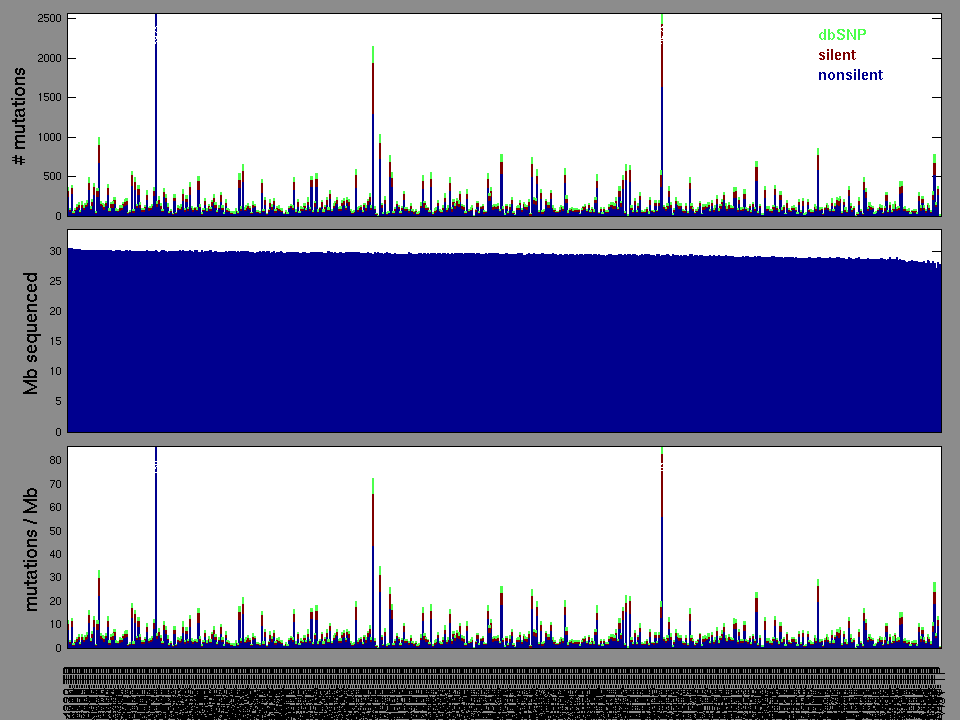
The mutation spectrum is depicted in the lego plots below in which the 96 possible mutation types are subdivided into six large blocks, color-coded to reflect the base substitution type. Each large block is further subdivided into the 16 possible pairs of 5' and 3' neighbors, as listed in the 4x4 trinucleotide context legend. The height of each block corresponds to the mutation frequency for that kind of mutation (counts of mutations normalized by the base coverage in a given bin). The shape of the spectrum is a signature for dominant mutational mechanisms in different tumor types.
Figure 3. Get High-res Image SNV Mutation rate lego plot for entire set. Each bin is normalized by base coverage for that bin. Colors represent the six SNV types on the upper right. The three-base context for each mutation is labeled in the 4x4 legend on the lower right. The fractional breakdown of SNV counts is shown in the pie chart on the upper left. If this figure is blank, not enough information was provided in the MAF to generate it.
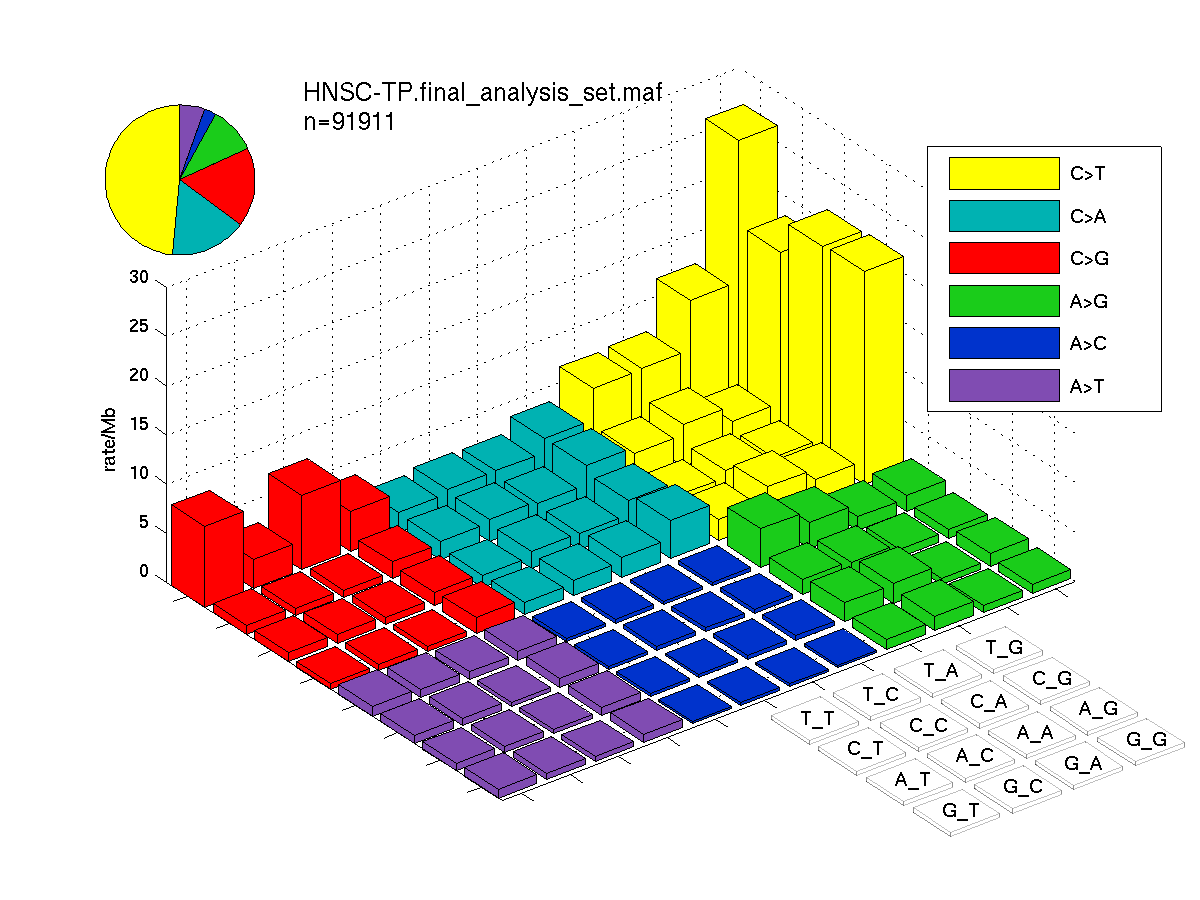
Figure 4. Get High-res Image SNV Mutation rate lego plots for 4 slices of mutation allele fraction (0<=AF<0.1, 0.1<=AF<0.25, 0.25<=AF<0.5, & 0.5<=AF) . The color code and three-base context legends are the same as the previous figure. If this figure is blank, not enough information was provided in the MAF to generate it.
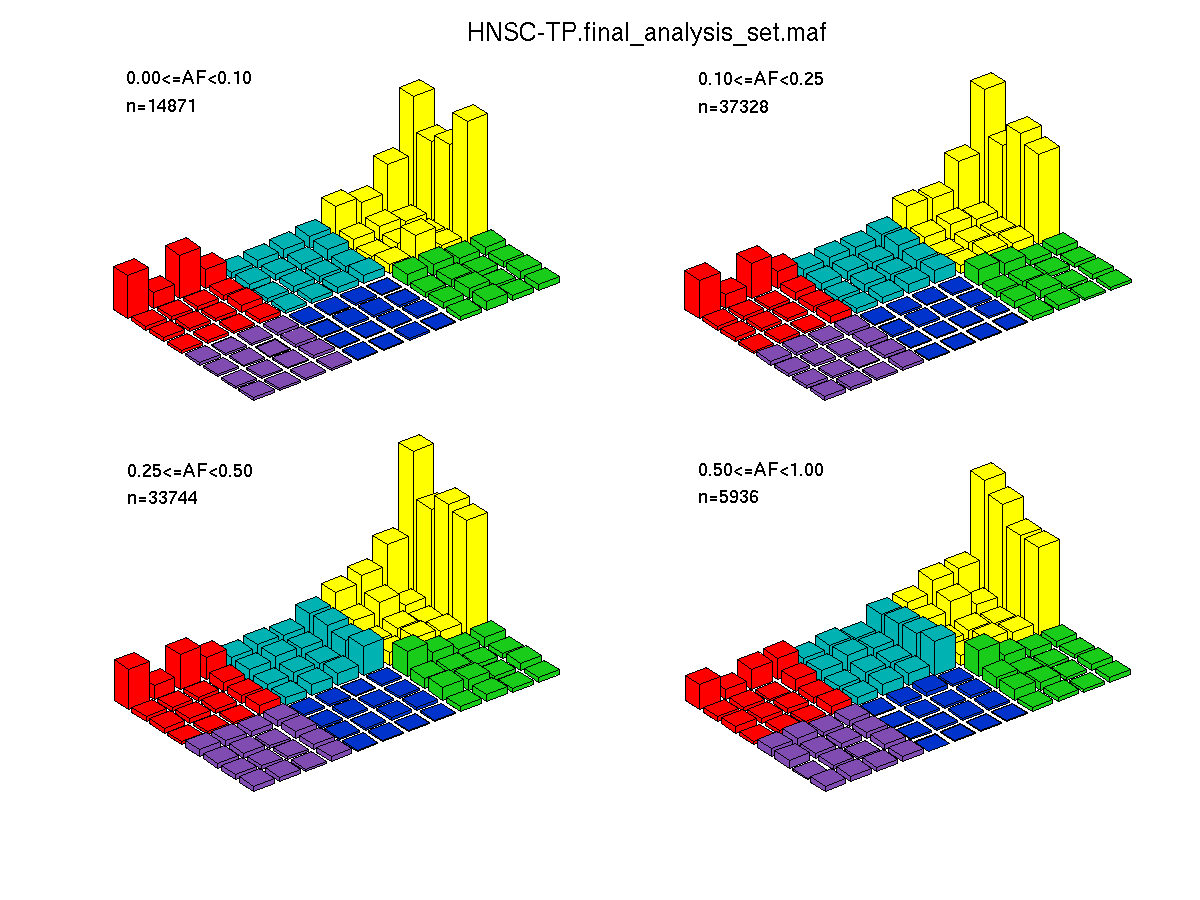
Figure 5. Get High-res Image The matrix in the center of the figure represents individual mutations in patient samples, color-coded by type of mutation, for the significantly mutated genes. The rate of synonymous and non-synonymous mutations is displayed at the top of the matrix. The barplot on the left of the matrix shows the number of mutations in each gene. The percentages represent the fraction of tumors with at least one mutation in the specified gene. The barplot to the right of the matrix displays the q-values for the most significantly mutated genes. The purple boxplots below the matrix (only displayed if required columns are present in the provided MAF) represent the distributions of allelic fractions observed in each sample. The plot at the bottom represents the base substitution distribution of individual samples, using the same categories that were used to calculate significance.
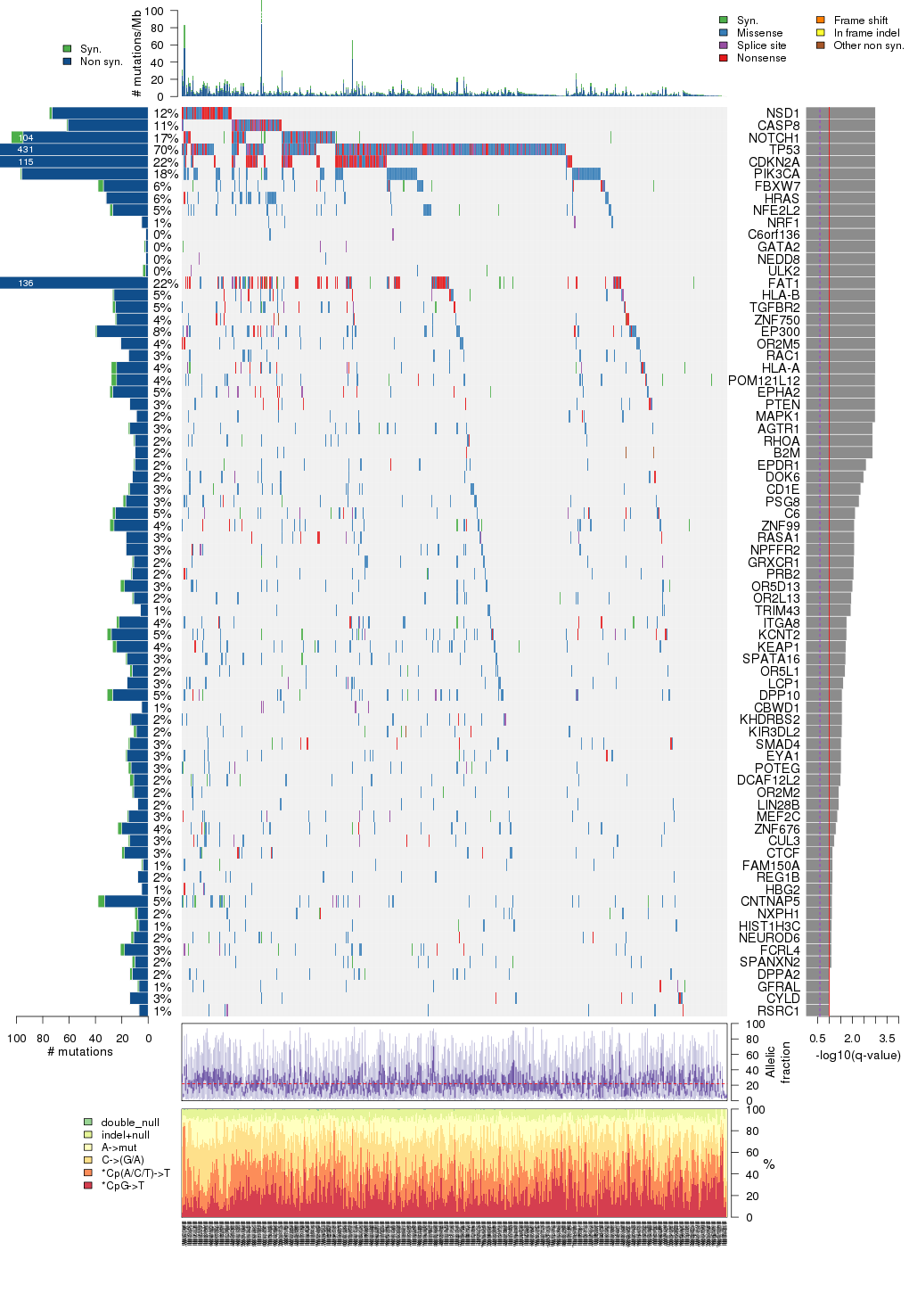
Column Descriptions:
-
N = number of sequenced bases in this gene across the individual set
-
n = number of (nonsilent) mutations in this gene across the individual set
-
npat = number of patients (individuals) with at least one nonsilent mutation
-
nsite = number of unique sites having a non-silent mutation
-
nsil = number of silent mutations in this gene across the individual set
-
n1 = number of nonsilent mutations of type: *CpG->T
-
n2 = number of nonsilent mutations of type: *Cp(A/C/T)->T
-
n3 = number of nonsilent mutations of type: C->(G/A)
-
n4 = number of nonsilent mutations of type: A->mut
-
n5 = number of nonsilent mutations of type: indel+null
-
n6 = number of nonsilent mutations of type: double_null
-
p_classic = p-value for the observed amount of nonsilent mutations being elevated in this gene
-
p_ns_s = p-value for the observed nonsilent/silent ratio being elevated in this gene
-
p_cons = p-value for enrichment of mutations at evolutionarily most-conserved sites in gene
-
p_joint = p-value for clustering + conservation
-
p = p-value (overall)
-
q = q-value, False Discovery Rate (Benjamini-Hochberg procedure)
Table 3. Get Full Table A Ranked List of Significantly Mutated Genes. Number of significant genes found: 75. Number of genes displayed: 35. Click on a gene name to display its stick figure depicting the distribution of mutations and mutation types across the chosen gene (this feature may not be available for all significant genes).
| rank | gene | description | N | n | npat | nsite | nsil | n1 | n2 | n3 | n4 | n5 | n6 | p_classic | p_ns_s | p_clust | p_cons | p_joint | p | q |
|---|---|---|---|---|---|---|---|---|---|---|---|---|---|---|---|---|---|---|---|---|
| 1 | NSD1 | nuclear receptor binding SET domain protein 1 | 4162026 | 73 | 63 | 72 | 2 | 2 | 9 | 13 | 5 | 38 | 6 | 4.11e-15 | 0.000300 | 5e-05 | 0.000056 | 5.2e-06 | 0.000 | 0.000 |
| 2 | CASP8 | caspase 8, apoptosis-related cysteine peptidase | 890224 | 61 | 55 | 49 | 1 | 4 | 8 | 8 | 8 | 31 | 2 | 2.66e-15 | 1.55e-06 | 0.6 | 0.000013 | 0.00016 | 0.000 | 0.000 |
| 3 | NOTCH1 | Notch homolog 1, translocation-associated (Drosophila) | 3182901 | 95 | 87 | 92 | 9 | 14 | 15 | 14 | 9 | 42 | 1 | 4.11e-15 | 1.19e-06 | 0.00022 | 0.2 | 0.00043 | 1.11e-16 | 6.70e-13 |
| 4 | TP53 | tumor protein p53 | 627695 | 426 | 359 | 209 | 5 | 72 | 45 | 61 | 67 | 171 | 10 | <1.00e-15 | <1.00e-15 | 0 | 0 | 0 | <1.00e-15 | <1.29e-12 |
| 5 | CDKN2A | cyclin-dependent kinase inhibitor 2A (melanoma, p16, inhibits CDK4) | 432500 | 114 | 112 | 54 | 1 | 4 | 3 | 7 | 7 | 90 | 3 | <1.00e-15 | 4.29e-11 | 0 | 0 | 0 | <1.00e-15 | <1.29e-12 |
| 6 | PIK3CA | phosphoinositide-3-kinase, catalytic, alpha polypeptide | 1675015 | 96 | 94 | 35 | 1 | 2 | 55 | 6 | 30 | 3 | 0 | 1.11e-15 | 1.79e-11 | 0 | 0.00058 | 0 | <1.00e-15 | <1.29e-12 |
| 7 | FBXW7 | F-box and WD repeat domain containing 7 | 1269883 | 34 | 33 | 25 | 4 | 4 | 2 | 11 | 5 | 11 | 1 | 5.71e-10 | 0.272 | 2e-07 | 0.19 | 0 | <1.00e-15 | <1.29e-12 |
| 8 | HRAS | v-Ha-ras Harvey rat sarcoma viral oncogene homolog | 331344 | 32 | 29 | 9 | 0 | 7 | 3 | 18 | 3 | 1 | 0 | 4.33e-15 | 3.95e-05 | 0 | 5.4e-06 | 0 | <1.00e-15 | <1.29e-12 |
| 9 | NFE2L2 | nuclear factor (erythroid-derived 2)-like 2 | 911867 | 27 | 26 | 18 | 2 | 0 | 6 | 13 | 7 | 1 | 0 | 4.25e-13 | 0.0701 | 0 | 0 | 0 | <1.00e-15 | <1.29e-12 |
| 10 | NRF1 | nuclear respiratory factor 1 | 782181 | 5 | 5 | 5 | 0 | 0 | 1 | 2 | 0 | 2 | 0 | 0.165 | 0.310 | 0.75 | 0 | 0 | <1.00e-15 | <1.29e-12 |
| 11 | C6orf136 | chromosome 6 open reading frame 136 | 526964 | 2 | 2 | 2 | 0 | 0 | 0 | 0 | 1 | 1 | 0 | 0.549 | 0.598 | 0.079 | 0 | 0 | <1.00e-15 | <1.29e-12 |
| 12 | GATA2 | GATA binding protein 2 | 636913 | 2 | 2 | 2 | 1 | 0 | 0 | 0 | 0 | 2 | 0 | 0.762 | 0.659 | 0.049 | 0 | 0 | <1.00e-15 | <1.29e-12 |
| 13 | NEDD8 | neural precursor cell expressed, developmentally down-regulated 8 | 127942 | 2 | 2 | 2 | 0 | 0 | 0 | 1 | 0 | 1 | 0 | 0.0489 | 0.659 | 0.88 | 0 | 0 | <1.00e-15 | <1.29e-12 |
| 14 | ULK2 | unc-51-like kinase 2 (C. elegans) | 1552074 | 2 | 2 | 2 | 2 | 0 | 0 | 1 | 0 | 1 | 0 | 0.995 | 0.943 | 0.82 | 0 | 0 | <1.00e-15 | <1.29e-12 |
| 15 | FAT1 | FAT tumor suppressor homolog 1 (Drosophila) | 6963586 | 125 | 114 | 120 | 11 | 3 | 7 | 11 | 11 | 77 | 16 | 3.66e-15 | 5.83e-05 | 0.14 | 0.044 | 0.029 | 4.00e-15 | 4.83e-12 |
| 16 | HLA-B | major histocompatibility complex, class I, B | 502645 | 26 | 24 | 21 | 1 | 0 | 1 | 8 | 2 | 15 | 0 | 1.14e-14 | 0.00659 | 0.033 | 0.064 | 0.034 | 1.41e-14 | 1.60e-11 |
| 17 | TGFBR2 | transforming growth factor, beta receptor II (70/80kDa) | 878843 | 25 | 23 | 16 | 2 | 4 | 7 | 0 | 5 | 9 | 0 | 1.52e-11 | 0.00403 | 0.0052 | 0.11 | 0.0087 | 4.07e-12 | 4.34e-09 |
| 18 | ZNF750 | zinc finger protein 750 | 1111690 | 24 | 21 | 22 | 1 | 1 | 2 | 4 | 3 | 14 | 0 | 7.48e-08 | 0.0388 | 0.0013 | 0.00027 | 0.000016 | 3.49e-11 | 3.51e-08 |
| 19 | EP300 | E1A binding protein p300 | 3751833 | 39 | 39 | 32 | 1 | 5 | 10 | 7 | 7 | 10 | 0 | 2.16e-08 | 0.000293 | 0.00019 | 0.047 | 0.00029 | 1.70e-10 | 1.62e-07 |
| 20 | OR2M5 | olfactory receptor, family 2, subfamily M, member 5 | 480420 | 21 | 18 | 20 | 0 | 4 | 3 | 10 | 2 | 2 | 0 | 1.57e-11 | 0.00297 | 0.48 | 0.88 | 0.62 | 2.58e-10 | 2.34e-07 |
| 21 | RAC1 | ras-related C3 botulinum toxin substrate 1 (rho family, small GTP binding protein Rac1) | 317246 | 15 | 14 | 8 | 0 | 6 | 4 | 2 | 3 | 0 | 0 | 1.46e-10 | 0.00386 | 0.18 | 0.061 | 0.075 | 2.87e-10 | 2.47e-07 |
| 22 | HLA-A | major histocompatibility complex, class I, A | 564314 | 24 | 22 | 21 | 4 | 1 | 0 | 2 | 6 | 15 | 0 | 4.85e-10 | 0.224 | 0.068 | 0.39 | 0.096 | 1.15e-09 | 9.47e-07 |
| 23 | POM121L12 | POM121 transmembrane nucleoporin-like 12 | 443503 | 24 | 22 | 24 | 4 | 6 | 2 | 9 | 4 | 3 | 0 | 1.17e-08 | 0.0642 | 0.1 | 0.15 | 0.12 | 2.89e-08 | 2.10e-05 |
| 24 | EPHA2 | EPH receptor A2 | 1449501 | 27 | 24 | 24 | 2 | 6 | 1 | 2 | 0 | 16 | 2 | 2.22e-07 | 0.0231 | 0.0069 | 0.22 | 0.0061 | 2.90e-08 | 2.10e-05 |
| 25 | PTEN | phosphatase and tensin homolog (mutated in multiple advanced cancers 1) | 618847 | 14 | 14 | 14 | 0 | 1 | 1 | 2 | 2 | 8 | 0 | 2.74e-08 | 0.0580 | 0.21 | 0.015 | 0.05 | 2.90e-08 | 2.10e-05 |
| 26 | MAPK1 | mitogen-activated protein kinase 1 | 505899 | 9 | 9 | 2 | 0 | 7 | 1 | 0 | 0 | 1 | 0 | 2.84e-05 | 0.0486 | 4e-05 | 0.05 | 0.000053 | 3.21e-08 | 2.24e-05 |
| 27 | AGTR1 | angiotensin II receptor, type 1 | 552840 | 14 | 14 | 14 | 1 | 2 | 5 | 2 | 5 | 0 | 0 | 4.16e-08 | 0.0568 | 0.51 | 0.44 | 0.62 | 4.78e-07 | 0.000314 |
| 28 | RHOA | ras homolog gene family, member A | 304980 | 10 | 10 | 7 | 1 | 0 | 1 | 6 | 2 | 1 | 0 | 5.97e-07 | 0.296 | 0.055 | 0.082 | 0.044 | 4.85e-07 | 0.000314 |
| 29 | B2M | beta-2-microglobulin | 189710 | 10 | 9 | 9 | 0 | 0 | 2 | 2 | 0 | 6 | 0 | 3.94e-08 | 0.242 | 0.45 | 0.51 | 0.7 | 5.11e-07 | 0.000319 |
| 30 | EPDR1 | ependymin related protein 1 (zebrafish) | 474660 | 10 | 10 | 10 | 1 | 1 | 1 | 2 | 5 | 1 | 0 | 0.000127 | 0.249 | 0.00091 | 0.0036 | 0.0012 | 2.50e-06 | 0.00151 |
| 31 | DOK6 | docking protein 6 | 494748 | 12 | 11 | 12 | 0 | 1 | 2 | 5 | 2 | 2 | 0 | 1.64e-05 | 0.0635 | 0.42 | 0.0023 | 0.014 | 3.78e-06 | 0.00221 |
| 32 | CD1E | CD1e molecule | 605964 | 14 | 14 | 14 | 1 | 4 | 5 | 4 | 0 | 1 | 0 | 3.70e-07 | 0.0880 | 0.85 | 0.79 | 1 | 5.85e-06 | 0.00331 |
| 33 | PSG8 | pregnancy specific beta-1-glycoprotein 8 | 674216 | 17 | 17 | 16 | 2 | 1 | 5 | 8 | 2 | 1 | 0 | 5.41e-07 | 0.103 | 0.9 | 0.38 | 0.88 | 7.37e-06 | 0.00404 |
| 34 | C6 | complement component 6 | 1464933 | 25 | 23 | 25 | 2 | 1 | 5 | 6 | 4 | 9 | 0 | 2.26e-06 | 0.0821 | 0.51 | 0.17 | 0.36 | 1.23e-05 | 0.00653 |
| 35 | ZNF99 | zinc finger protein 99 | 1584967 | 26 | 21 | 26 | 3 | 0 | 5 | 11 | 4 | 6 | 0 | 0.000230 | 0.357 | 0.0052 | 0.023 | 0.0042 | 1.45e-05 | 0.00715 |
Figure S1. This figure depicts the distribution of mutations and mutation types across the NSD1 significant gene.
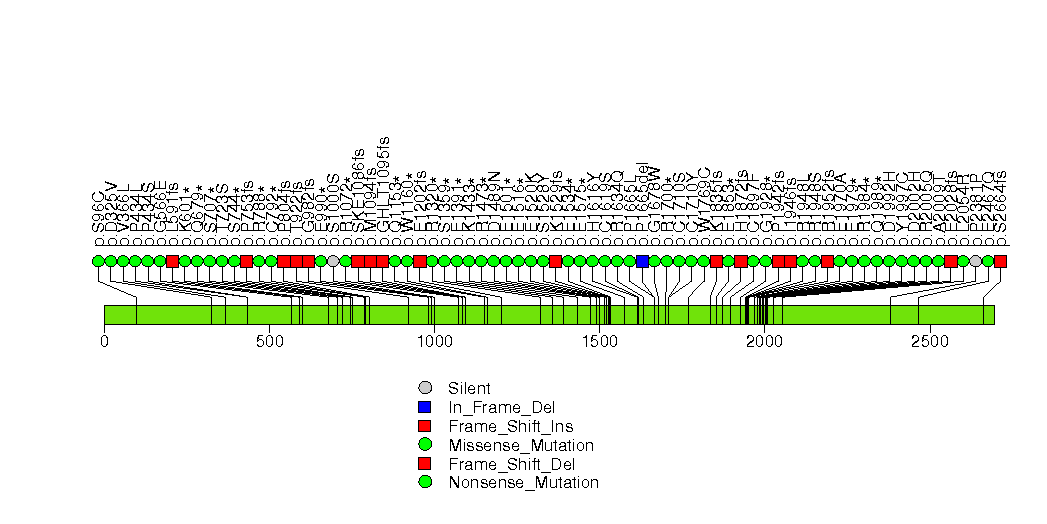
Figure S2. This figure depicts the distribution of mutations and mutation types across the NOTCH1 significant gene.
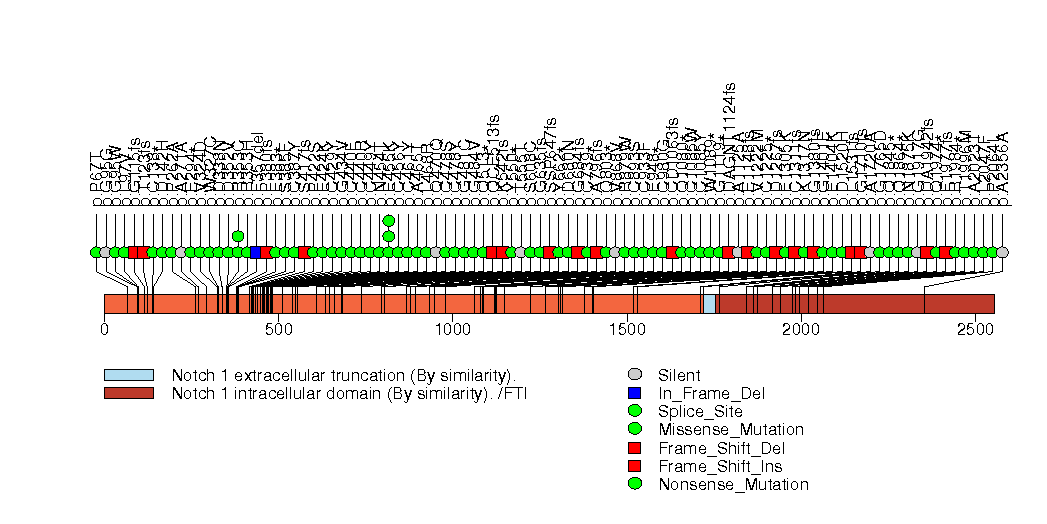
Figure S3. This figure depicts the distribution of mutations and mutation types across the TP53 significant gene.

Figure S4. This figure depicts the distribution of mutations and mutation types across the CDKN2A significant gene.
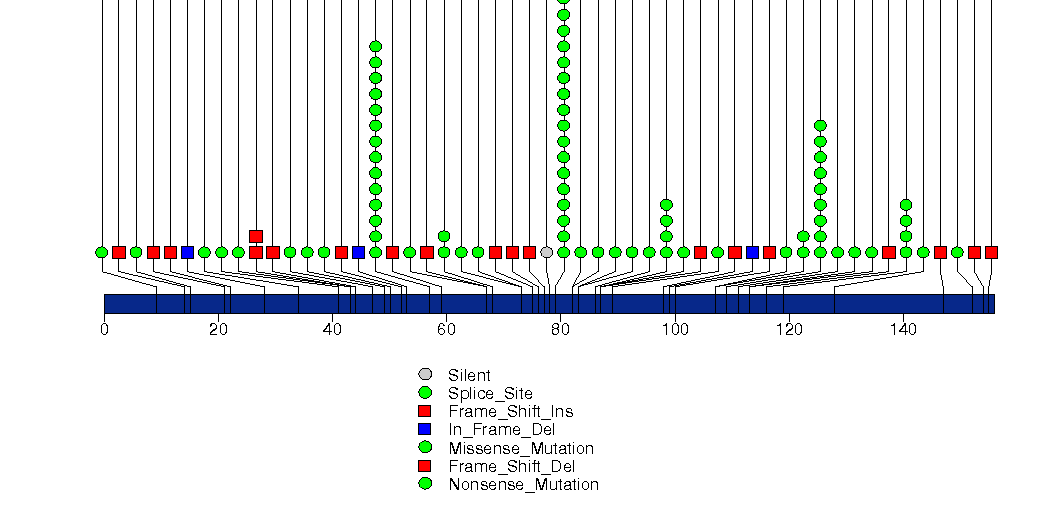
Figure S5. This figure depicts the distribution of mutations and mutation types across the PIK3CA significant gene.

Figure S6. This figure depicts the distribution of mutations and mutation types across the FBXW7 significant gene.

Figure S7. This figure depicts the distribution of mutations and mutation types across the HRAS significant gene.
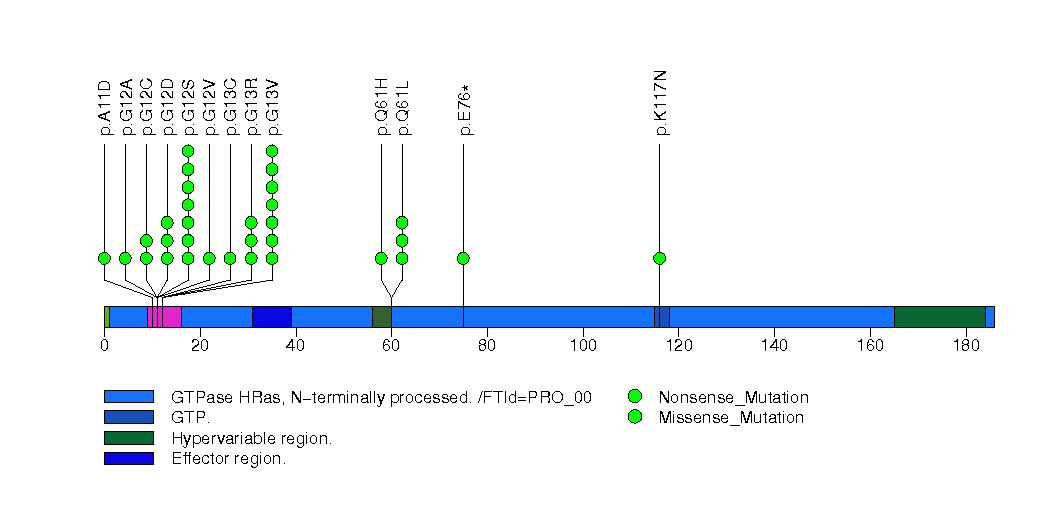
Figure S8. This figure depicts the distribution of mutations and mutation types across the NFE2L2 significant gene.

Figure S9. This figure depicts the distribution of mutations and mutation types across the NRF1 significant gene.
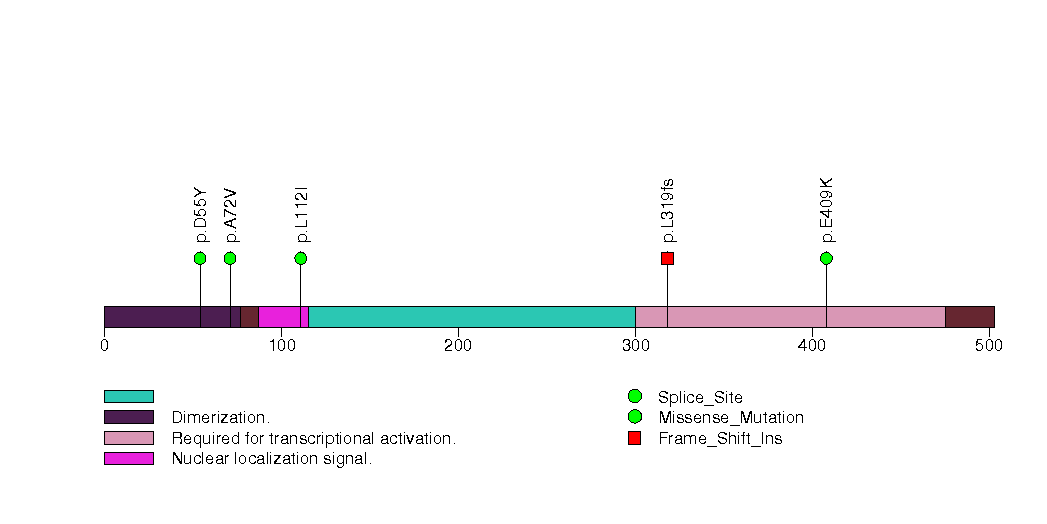
Figure S10. This figure depicts the distribution of mutations and mutation types across the C6orf136 significant gene.
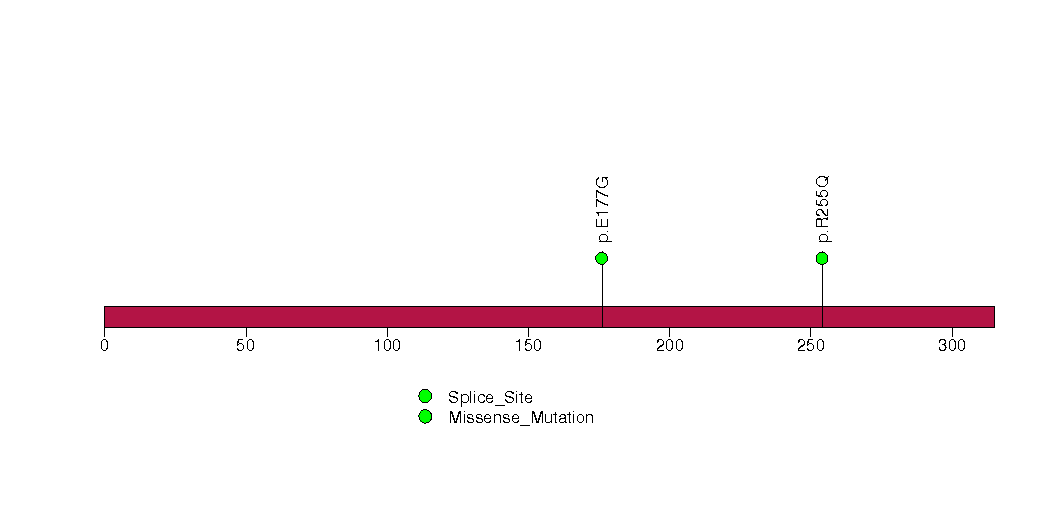
Figure S11. This figure depicts the distribution of mutations and mutation types across the GATA2 significant gene.
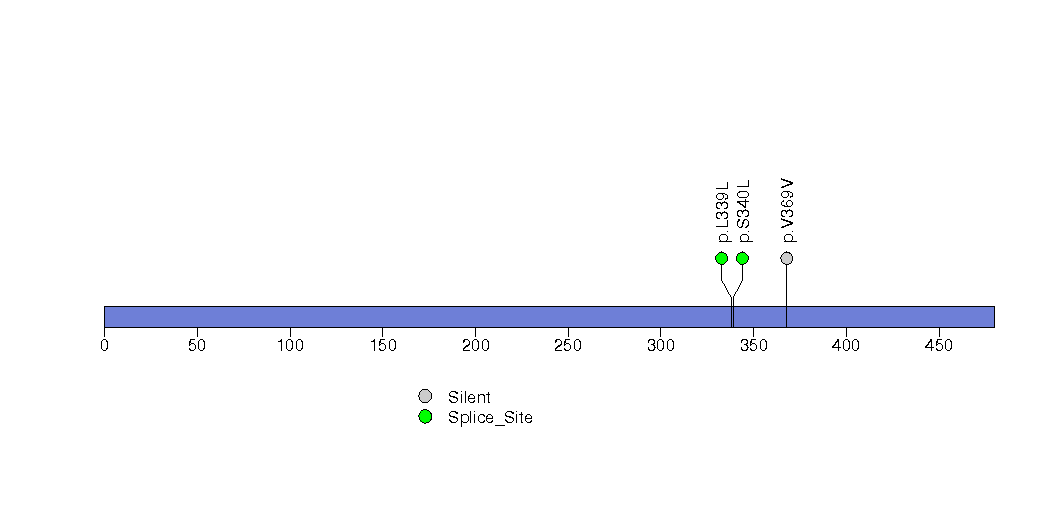
Figure S12. This figure depicts the distribution of mutations and mutation types across the NEDD8 significant gene.
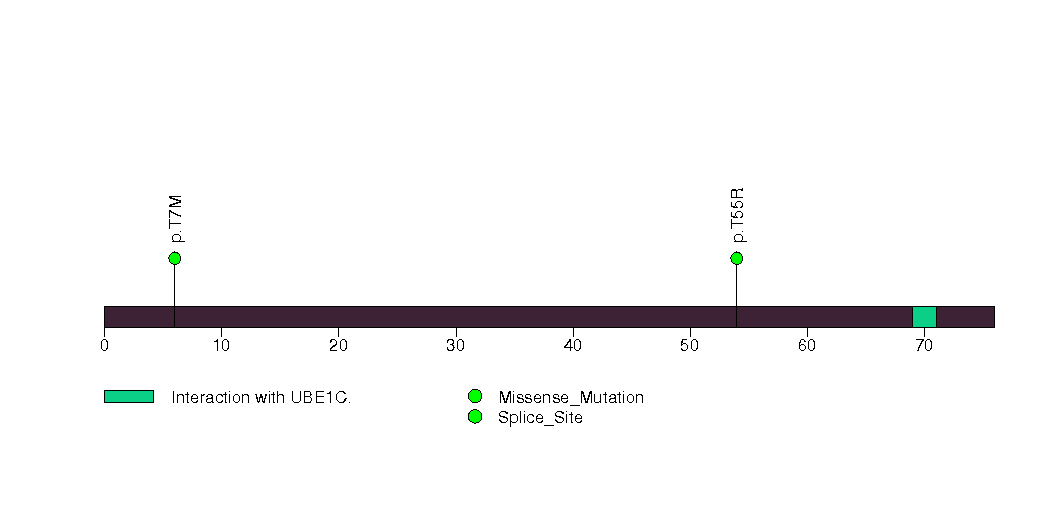
Figure S13. This figure depicts the distribution of mutations and mutation types across the ULK2 significant gene.

Figure S14. This figure depicts the distribution of mutations and mutation types across the FAT1 significant gene.
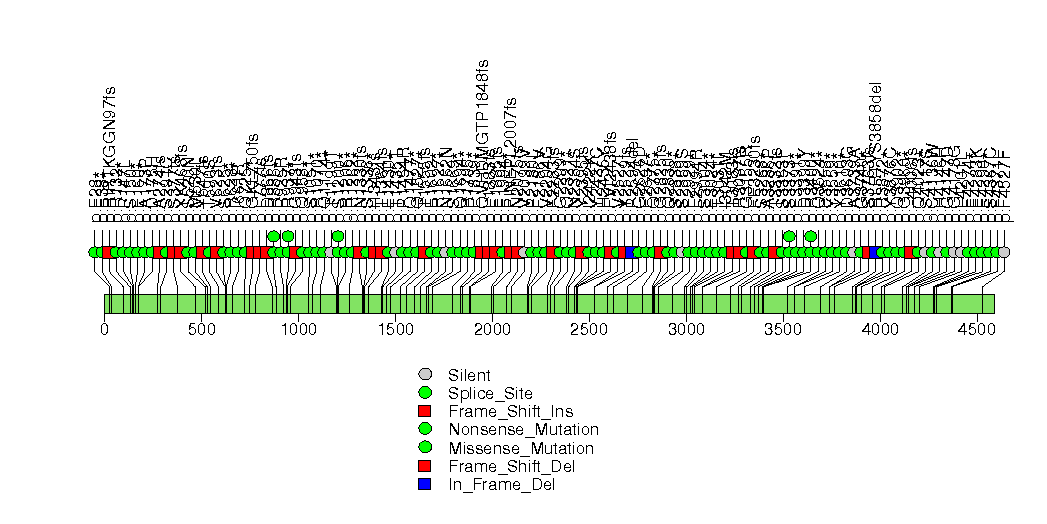
Figure S15. This figure depicts the distribution of mutations and mutation types across the HLA-B significant gene.
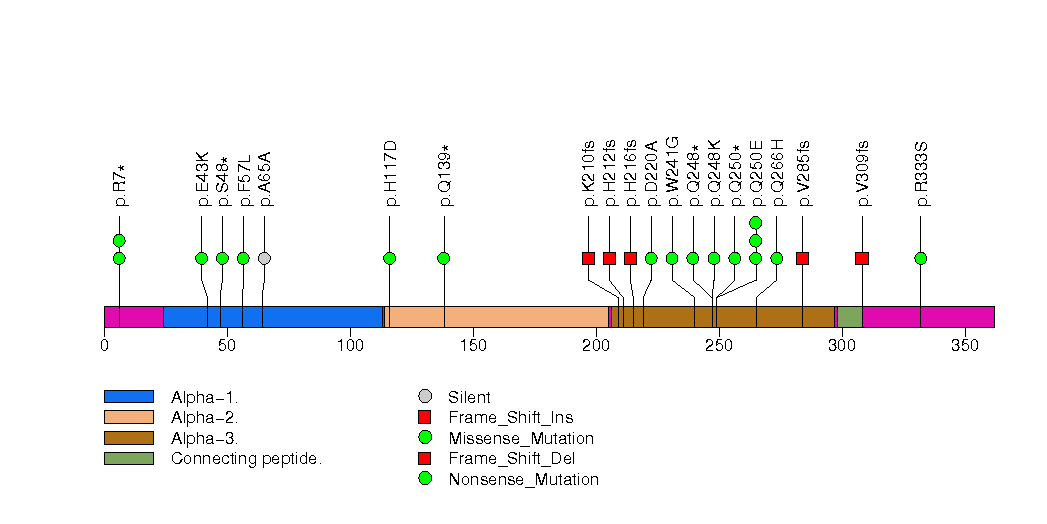
Figure S16. This figure depicts the distribution of mutations and mutation types across the TGFBR2 significant gene.
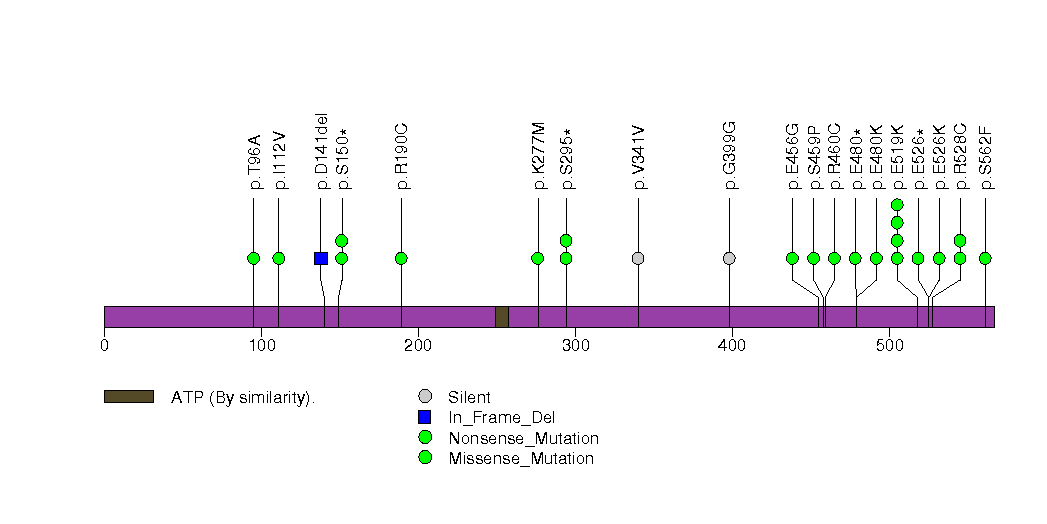
Figure S17. This figure depicts the distribution of mutations and mutation types across the ZNF750 significant gene.
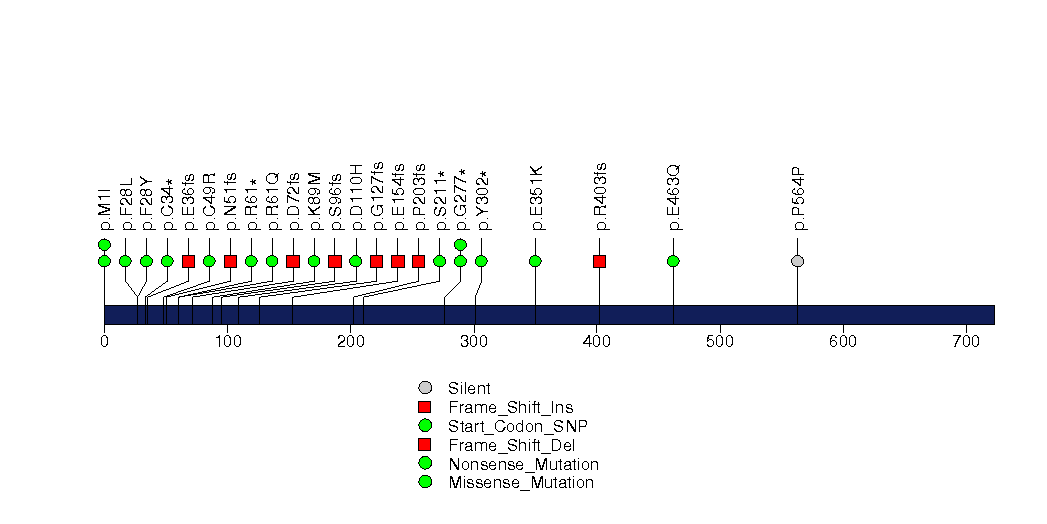
Figure S18. This figure depicts the distribution of mutations and mutation types across the EP300 significant gene.
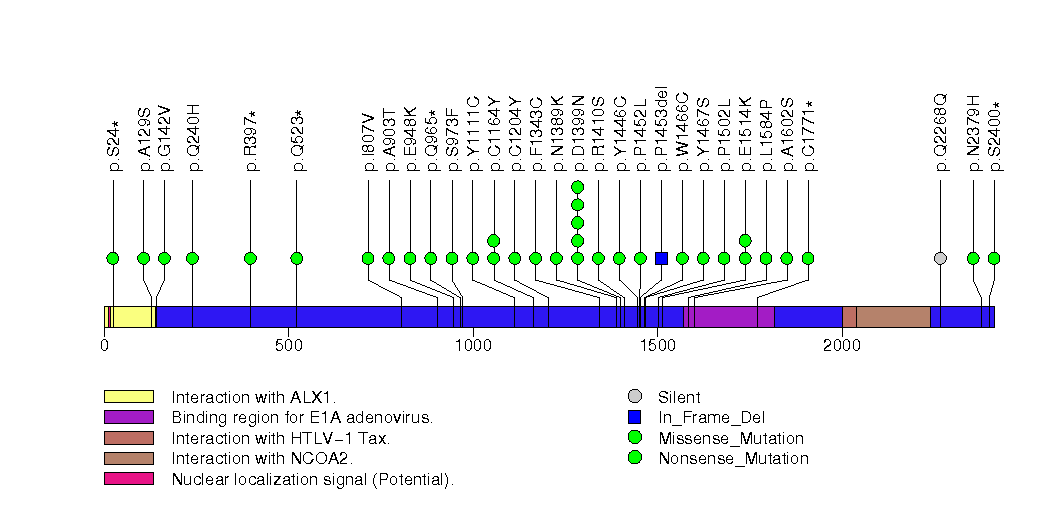
Figure S19. This figure depicts the distribution of mutations and mutation types across the OR2M5 significant gene.
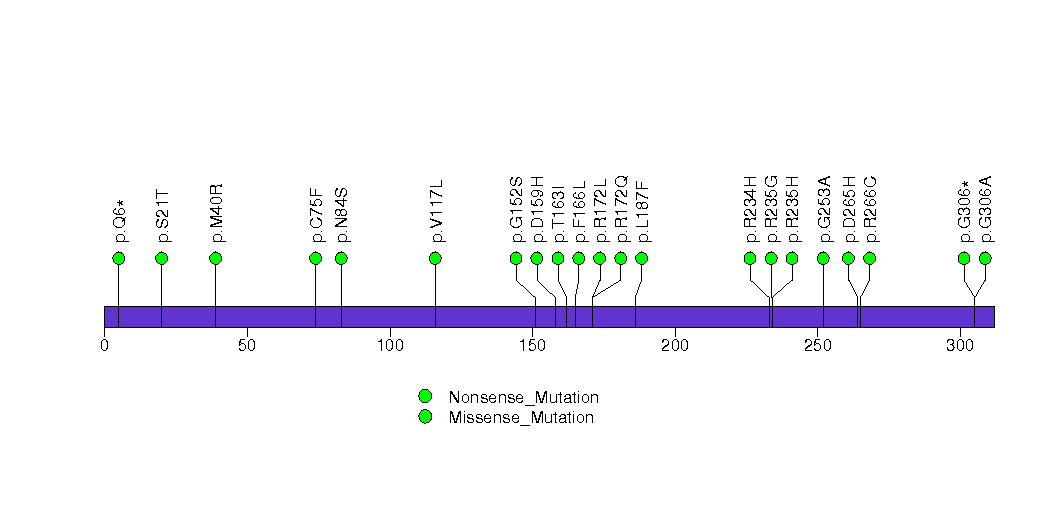
Figure S20. This figure depicts the distribution of mutations and mutation types across the RAC1 significant gene.
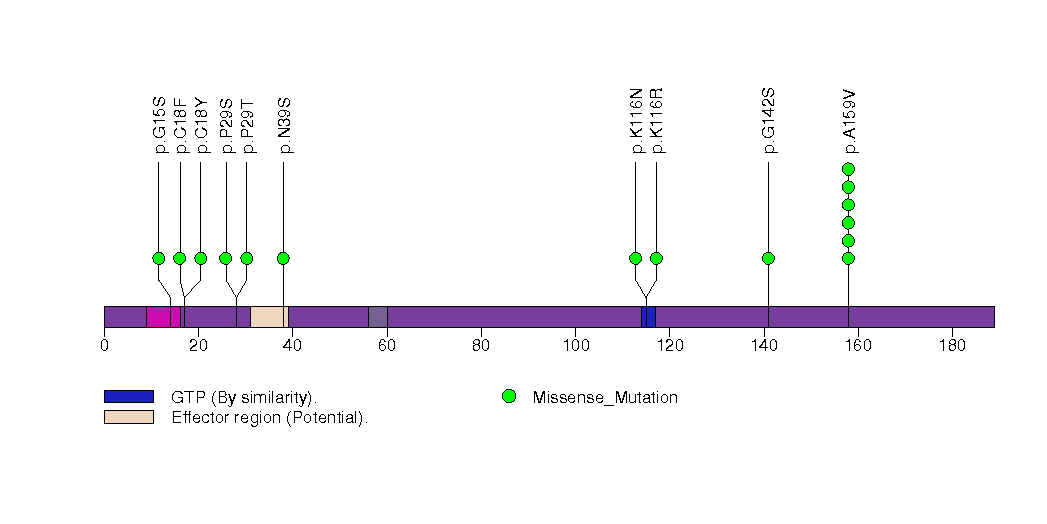
Figure S21. This figure depicts the distribution of mutations and mutation types across the HLA-A significant gene.
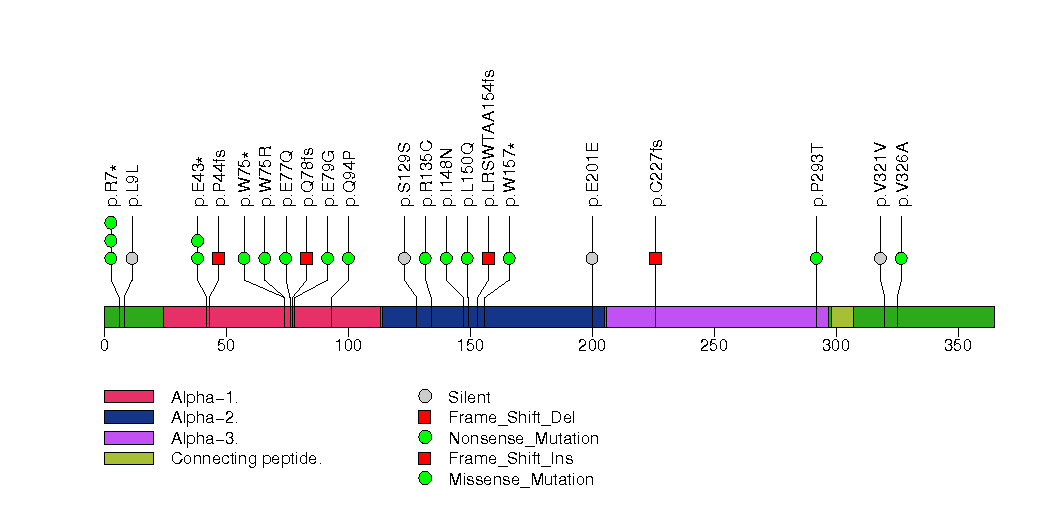
Figure S22. This figure depicts the distribution of mutations and mutation types across the POM121L12 significant gene.
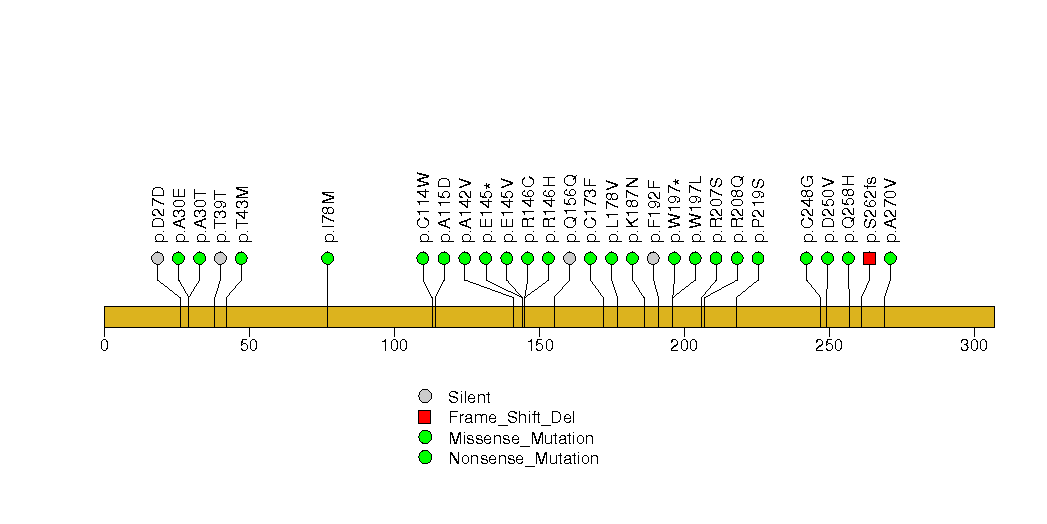
Figure S23. This figure depicts the distribution of mutations and mutation types across the EPHA2 significant gene.
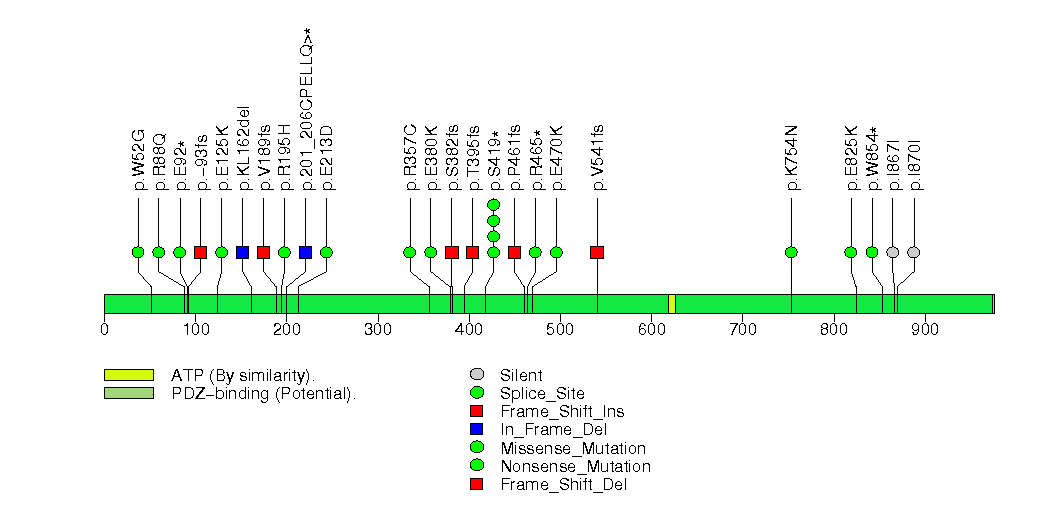
Figure S24. This figure depicts the distribution of mutations and mutation types across the PTEN significant gene.

Figure S25. This figure depicts the distribution of mutations and mutation types across the MAPK1 significant gene.
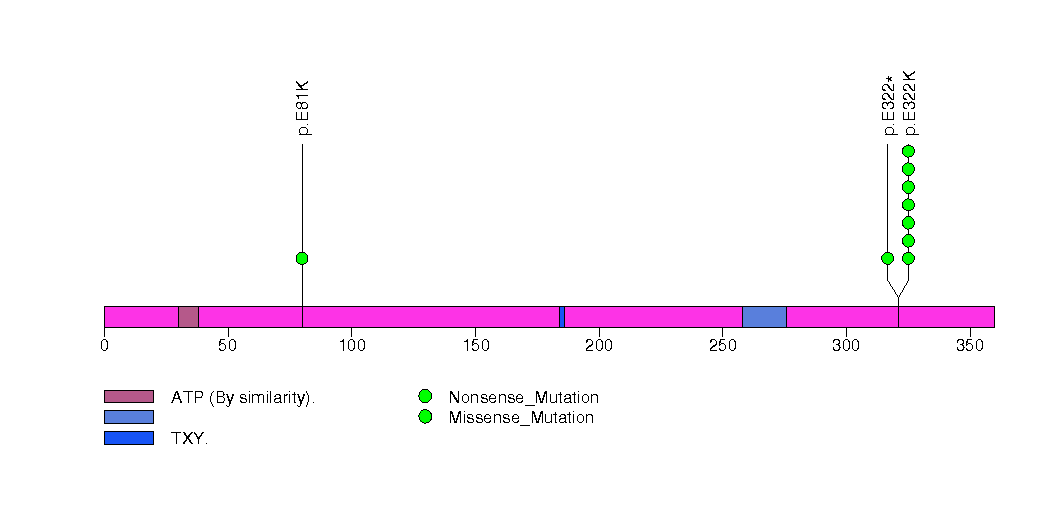
Figure S26. This figure depicts the distribution of mutations and mutation types across the AGTR1 significant gene.
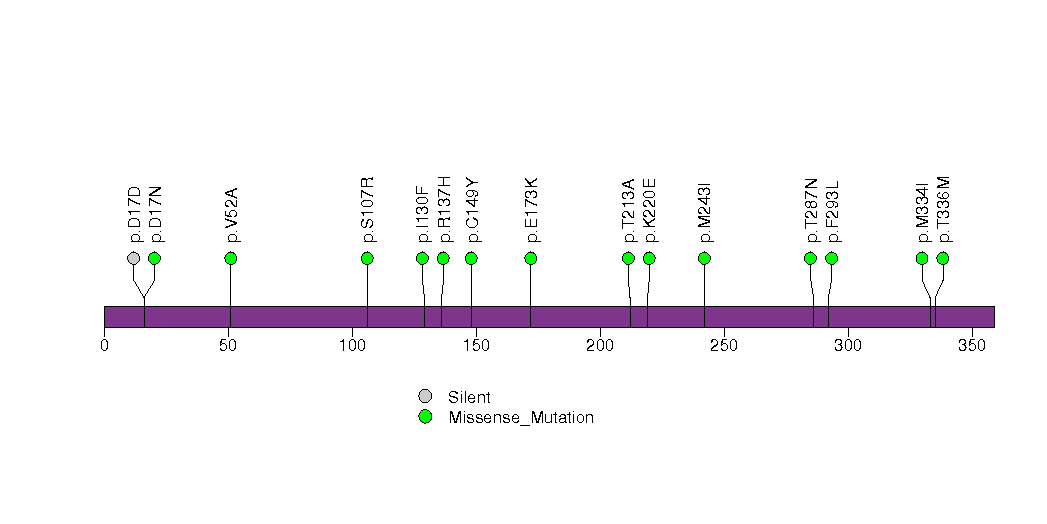
Figure S27. This figure depicts the distribution of mutations and mutation types across the RHOA significant gene.
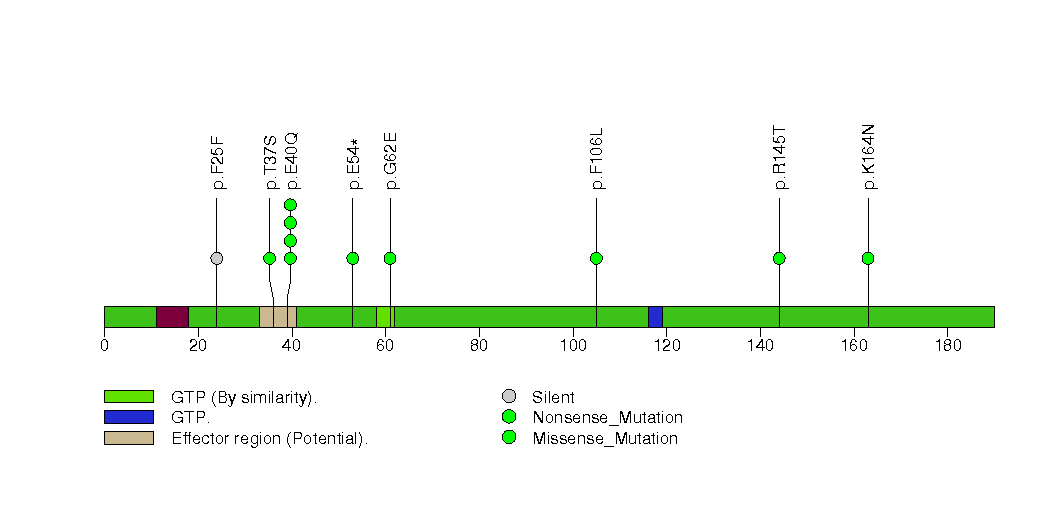
Figure S28. This figure depicts the distribution of mutations and mutation types across the B2M significant gene.
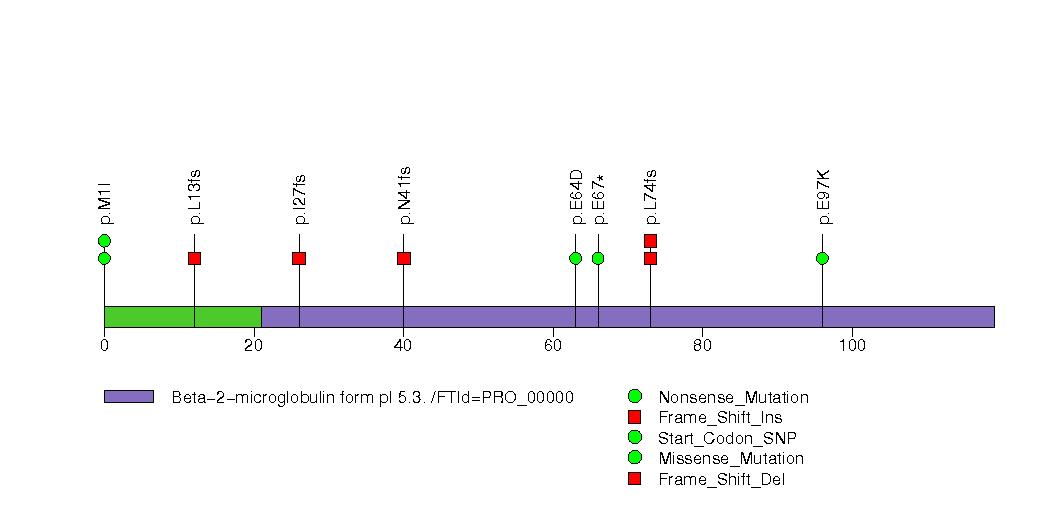
Figure S29. This figure depicts the distribution of mutations and mutation types across the EPDR1 significant gene.
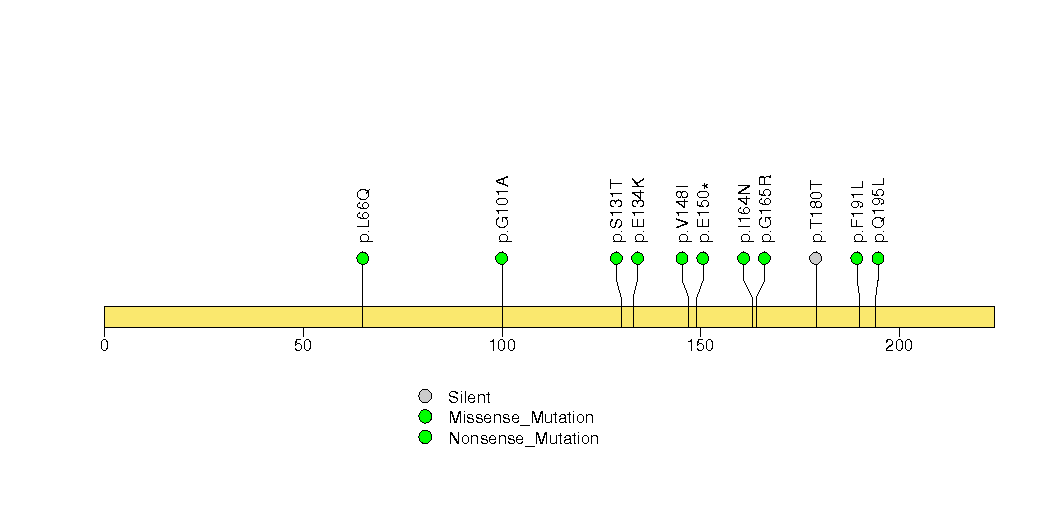
Figure S30. This figure depicts the distribution of mutations and mutation types across the DOK6 significant gene.

Figure S31. This figure depicts the distribution of mutations and mutation types across the CD1E significant gene.
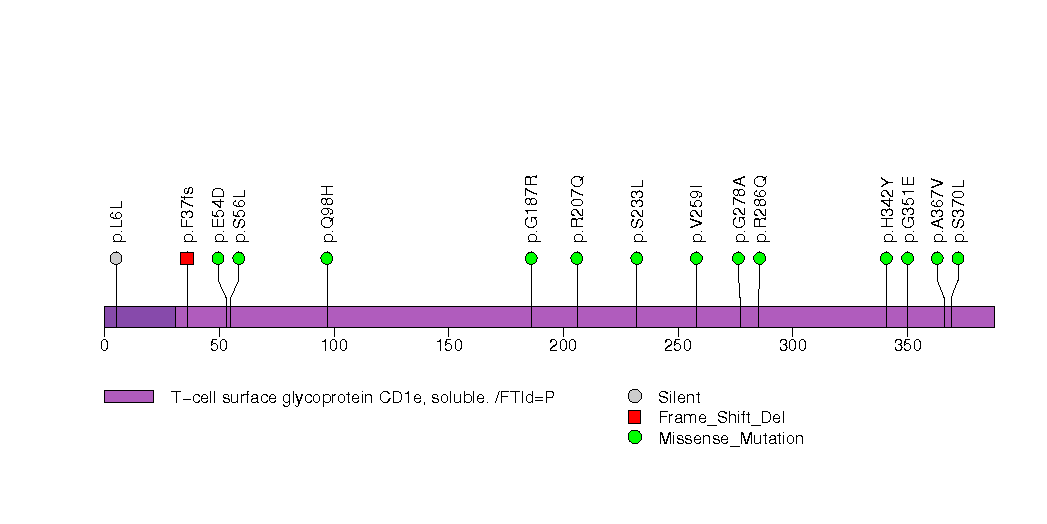
Figure S32. This figure depicts the distribution of mutations and mutation types across the PSG8 significant gene.
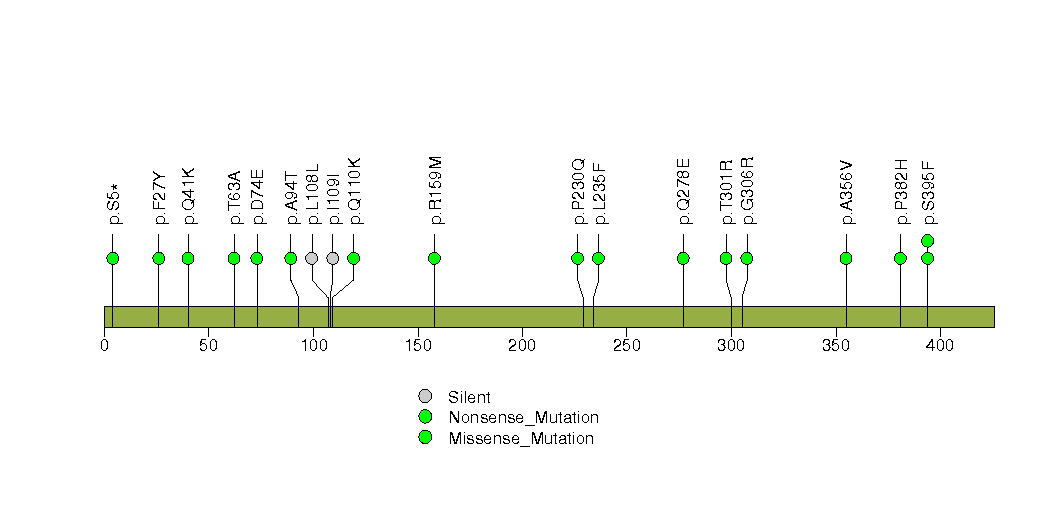
Figure S33. This figure depicts the distribution of mutations and mutation types across the C6 significant gene.

In this analysis, COSMIC is used as a filter to increase power by restricting the territory of each gene. Cosmic version: v48.
Table 4. Get Full Table Significantly mutated genes (COSMIC territory only). To access the database please go to: COSMIC. Number of significant genes found: 16. Number of genes displayed: 10
| rank | gene | description | n | cos | n_cos | N_cos | cos_ev | p | q |
|---|---|---|---|---|---|---|---|---|---|
| 1 | TP53 | tumor protein p53 | 426 | 356 | 392 | 181560 | 76737 | 0 | 0 |
| 2 | PIK3CA | phosphoinositide-3-kinase, catalytic, alpha polypeptide | 96 | 220 | 81 | 112200 | 38739 | 0 | 0 |
| 3 | CDKN2A | cyclin-dependent kinase inhibitor 2A (melanoma, p16, inhibits CDK4) | 114 | 332 | 112 | 169320 | 4767 | 0 | 0 |
| 4 | HRAS | v-Ha-ras Harvey rat sarcoma viral oncogene homolog | 32 | 19 | 31 | 9690 | 7799 | 2.9e-13 | 3.3e-10 |
| 5 | FGFR3 | fibroblast growth factor receptor 3 (achondroplasia, thanatophoric dwarfism) | 15 | 62 | 9 | 31620 | 5442 | 9.5e-13 | 8.6e-10 |
| 6 | FBXW7 | F-box and WD repeat domain containing 7 | 34 | 91 | 23 | 46410 | 520 | 1.2e-12 | 8.9e-10 |
| 7 | PIK3R1 | phosphoinositide-3-kinase, regulatory subunit 1 (alpha) | 10 | 33 | 6 | 16830 | 14 | 3.4e-10 | 2.2e-07 |
| 8 | PTEN | phosphatase and tensin homolog (mutated in multiple advanced cancers 1) | 14 | 767 | 14 | 391170 | 527 | 1.2e-08 | 6.6e-06 |
| 9 | RB1 | retinoblastoma 1 (including osteosarcoma) | 18 | 267 | 9 | 136170 | 24 | 3e-08 | 0.000015 |
| 10 | SMAD4 | SMAD family member 4 | 14 | 159 | 7 | 81090 | 17 | 1.8e-07 | 8e-05 |
Note:
n - number of (nonsilent) mutations in this gene across the individual set.
cos = number of unique mutated sites in this gene in COSMIC
n_cos = overlap between n and cos.
N_cos = number of individuals times cos.
cos_ev = total evidence: number of reports in COSMIC for mutations seen in this gene.
p = p-value for seeing the observed amount of overlap in this gene)
q = q-value, False Discovery Rate (Benjamini-Hochberg procedure)
Table 5. Get Full Table A Ranked List of Significantly Mutated Genesets. (Source: MSigDB GSEA Cannonical Pathway Set).Number of significant genesets found: 59. Number of genesets displayed: 10
| rank | geneset | description | genes | N_genes | mut_tally | N | n | npat | nsite | nsil | n1 | n2 | n3 | n4 | n5 | n6 | p_ns_s | p | q |
|---|---|---|---|---|---|---|---|---|---|---|---|---|---|---|---|---|---|---|---|
| 1 | G1_TO_S_CELL_CYCLE_REACTOME | ATM, CCNA1, CCNB1, CCND1, CCND2, CCND3, CCNE1, CCNE2, CCNG2, CCNH, CDC25A, CDC45L, CDK2, CDK4, CDK7, CDKN1A, CDKN1B, CDKN1C, CDKN2A, CDKN2B, CDKN2C, CDKN2D, CREB3, CREB3L1, CREB3L3, CREB3L4, CREBL1, CREBL1, TNXB, E2F1, E2F2, E2F3, E2F4, E2F5, E2F6, FLJ14001, GADD45A, GBA2, MCM2, MCM3, MCM4, MCM5, MCM6, MCM7, MDM2, MNAT1, MYC, MYT1, NACA, NACA, FKSG17, ORC1L, ORC2L, ORC3L, ORC4L, ORC5L, ORC6L, PCNA, POLA2, POLE, POLE2, PRIM1, PRIM2A, RB1, RBL1, RPA1, RPA2, RPA3, TFDP1, TFDP2, TP53, WEE1 | 64 | ATM(16), CCNA1(7), CCNB1(3), CCND1(4), CCND2(2), CCNE1(5), CCNE2(4), CCNG2(4), CDC25A(2), CDK4(5), CDKN1B(2), CDKN2A(114), CDKN2C(1), CREB3L1(4), CREB3L3(9), CREB3L4(2), E2F2(3), E2F3(3), E2F4(2), E2F5(6), E2F6(1), GADD45A(1), GBA2(6), MCM2(4), MCM3(4), MCM4(7), MCM5(2), MCM6(4), MCM7(9), MDM2(2), MNAT1(1), MYC(6), MYT1(12), NACA(25), PCNA(1), POLA2(2), POLE(11), POLE2(1), PRIM1(3), RB1(18), RBL1(11), RPA1(5), RPA2(1), TFDP1(2), TFDP2(1), TNXB(23), TP53(426), WEE1(1) | 58754687 | 788 | 415 | 508 | 77 | 104 | 113 | 138 | 112 | 307 | 14 | <1.00e-15 | <1.00e-15 | <5.93e-14 | |
| 2 | APOPTOSIS_GENMAPP | APAF1, BAK1, BCL2L7P1, BAX, BCL2, BCL2L1, BID, BIRC2, BIRC3, BIRC4, CASP2, CASP3, CASP6, CASP7, CASP8, CASP9, CYCS, FADD, FAS, FASLG, GZMB, IKBKG, JUN, MAP2K4, MAP3K1, MAP3K14, MAPK10, MCL1, MDM2, MYC, NFKB1, NFKBIA, PARP1, PRF1, RELA, RIPK1, TNF, TNFRSF1A, TNFRSF1B, TNFSF10, TP53, TRADD, TRAF1, TRAF2 | 41 | APAF1(12), BAK1(1), BAX(1), BCL2(1), BCL2L1(2), BID(3), BIRC2(2), BIRC3(2), CASP2(3), CASP3(2), CASP6(5), CASP7(3), CASP8(61), CASP9(1), FADD(4), FAS(5), FASLG(1), GZMB(2), JUN(1), MAP2K4(2), MAP3K1(6), MAPK10(4), MCL1(3), MDM2(2), MYC(6), NFKB1(5), NFKBIA(1), PARP1(5), PRF1(4), RELA(2), RIPK1(2), TNFRSF1A(1), TNFRSF1B(2), TNFSF10(1), TP53(426), TRADD(1), TRAF2(2) | 28538961 | 587 | 399 | 356 | 33 | 94 | 78 | 95 | 89 | 219 | 12 | <1.00e-15 | <1.00e-15 | <5.93e-14 | |
| 3 | G2PATHWAY | Activated Cdc2-cyclin B kinase regulates the G2/M transition; DNA damage stimulates the DNA-PK/ATM/ATR kinases, which inactivate Cdc2. | ATM, ATR, BRCA1, CCNB1, CDC2, CDC25A, CDC25B, CDC25C, CDC34, CDKN1A, CDKN2D, CHEK1, CHEK2, EP300, GADD45A, MDM2, MYT1, PLK, PRKDC, RPS6KA1, TP53, WEE1, YWHAH, YWHAQ | 22 | ATM(16), ATR(25), BRCA1(12), CCNB1(3), CDC25A(2), CDC25B(4), CDC25C(4), CDC34(4), CHEK1(1), CHEK2(5), EP300(39), GADD45A(1), MDM2(2), MYT1(12), PRKDC(28), RPS6KA1(10), TP53(426), WEE1(1), YWHAH(2), YWHAQ(3) | 31890716 | 600 | 394 | 376 | 34 | 94 | 85 | 107 | 102 | 202 | 10 | 1.33e-15 | <1.00e-15 | <5.93e-14 |
| 4 | TIDPATHWAY | On ligand binding, interferon gamma receptors stimulate JAK2 kinase to phosphorylate STAT transcription factors, which promote expression of interferon responsive genes. | DNAJA3, HSPA1A, IFNG, IFNGR1, IFNGR2, IKBKB, JAK2, LIN7A, NFKB1, NFKBIA, RB1, RELA, TIP-1, TNF, TNFRSF1A, TNFRSF1B, TP53, USH1C, WT1 | 18 | DNAJA3(3), IFNG(2), IFNGR1(4), IFNGR2(5), IKBKB(12), JAK2(5), LIN7A(5), NFKB1(5), NFKBIA(1), RB1(18), RELA(2), TNFRSF1A(1), TNFRSF1B(2), TP53(426), USH1C(3), WT1(3) | 13844325 | 497 | 384 | 279 | 27 | 78 | 57 | 84 | 75 | 193 | 10 | <1.00e-15 | <1.00e-15 | <5.93e-14 |
| 5 | P53PATHWAY | p53 induces cell cycle arrest or apoptosis under conditions of DNA damage. | APAF1, ATM, BAX, BCL2, CCND1, CCNE1, CDK2, CDK4, CDKN1A, E2F1, GADD45A, MDM2, PCNA, RB1, TIMP3, TP53 | 16 | APAF1(12), ATM(16), BAX(1), BCL2(1), CCND1(4), CCNE1(5), CDK4(5), GADD45A(1), MDM2(2), PCNA(1), RB1(18), TP53(426) | 13779449 | 492 | 379 | 275 | 19 | 76 | 61 | 71 | 80 | 194 | 10 | <1.00e-15 | <1.00e-15 | <5.93e-14 |
| 6 | SA_G1_AND_S_PHASES | Cdk2, 4, and 6 bind cyclin D in G1, while cdk2/cyclin E promotes the G1/S transition. | ARF1, ARF3, CCND1, CDK2, CDK4, CDKN1A, CDKN1B, CDKN2A, CFL1, E2F1, E2F2, MDM2, NXT1, PRB1, TP53 | 15 | CCND1(4), CDK4(5), CDKN1B(2), CDKN2A(114), CFL1(2), E2F2(3), MDM2(2), PRB1(8), TP53(426) | 6424705 | 566 | 372 | 289 | 17 | 77 | 55 | 77 | 79 | 265 | 13 | <1.00e-15 | <1.00e-15 | <5.93e-14 |
| 7 | RNAPATHWAY | dsRNA-activated protein kinase phosphorylates elF2a, which generally inhibits translation, and activates NF-kB to provoke inflammation. | CHUK, DNAJC3, EIF2S1, EIF2S2, MAP3K14, NFKB1, NFKBIA, PRKR, RELA, TP53 | 9 | CHUK(6), DNAJC3(2), EIF2S1(2), EIF2S2(6), NFKB1(5), NFKBIA(1), RELA(2), TP53(426) | 7476252 | 450 | 367 | 233 | 14 | 76 | 50 | 66 | 70 | 178 | 10 | <1.00e-15 | <1.00e-15 | <5.93e-14 |
| 8 | RACCYCDPATHWAY | Ras, Rac, and Rho coordinate to induce cyclin D1 expression and activate cdk2 to promote the G1/S transition. | AKT1, ARHA, CCND1, CCNE1, CDK2, CDK4, CDK6, CDKN1A, CDKN1B, E2F1, HRAS, MAPK1, MAPK3, NFKB1, NFKBIA, PAK1, PIK3CA, PIK3R1, RAC1, RAF1, RB1, RELA, TFDP1 | 22 | AKT1(2), CCND1(4), CCNE1(5), CDK4(5), CDK6(2), CDKN1B(2), HRAS(32), MAPK1(9), NFKB1(5), NFKBIA(1), PAK1(3), PIK3CA(96), PIK3R1(10), RAC1(15), RAF1(3), RB1(18), RELA(2), TFDP1(2) | 15389151 | 216 | 171 | 118 | 19 | 26 | 75 | 38 | 44 | 33 | 0 | 1.18e-13 | <1.00e-15 | <5.93e-14 |
| 9 | INSULINPATHWAY | Insulin regulates glucose levels via Ras-mediated transcriptional activation. | CSNK2A1, ELK1, FOS, GRB2, HRAS, INS, INSR, IRS1, JUN, MAP2K1, MAPK3, MAPK8, PIK3CA, PIK3R1, PTPN11, RAF1, RASA1, SHC1, SLC2A4, SOS1, SRF | 21 | CSNK2A1(7), ELK1(2), FOS(6), HRAS(32), INSR(3), IRS1(4), JUN(1), MAP2K1(5), MAPK8(4), PIK3CA(96), PIK3R1(10), PTPN11(2), RAF1(3), RASA1(17), SHC1(3), SLC2A4(3), SOS1(9), SRF(1) | 19385060 | 208 | 169 | 122 | 10 | 18 | 69 | 47 | 45 | 28 | 1 | <1.00e-15 | <1.00e-15 | <5.93e-14 |
| 10 | AKTPATHWAY | Second messenger PIP3 promotes cell survival by activating the anti-apoptotic kinase AKT. | AKT1, BAD, CASP9, CHUK, FOXO1A, FOXO3A, GH1, GHR, HSPCA, MLLT7, NFKB1, NFKBIA, PDPK1, PIK3CA, PIK3R1, PPP2CA, RELA, TNFSF6, YWHAH | 14 | AKT1(2), BAD(1), CASP9(1), CHUK(6), GH1(4), GHR(8), NFKB1(5), NFKBIA(1), PDPK1(4), PIK3CA(96), PIK3R1(10), RELA(2), YWHAH(2) | 10744900 | 142 | 127 | 80 | 10 | 7 | 67 | 17 | 37 | 14 | 0 | 6.29e-11 | 1.11e-15 | 5.93e-14 |
Table 6. Get Full Table A Ranked List of Significantly Mutated Genesets (Excluding Significantly Mutated Genes). Number of significant genesets found: 0. Number of genesets displayed: 10
| rank | geneset | description | genes | N_genes | mut_tally | N | n | npat | nsite | nsil | n1 | n2 | n3 | n4 | n5 | n6 | p_ns_s | p | q |
|---|---|---|---|---|---|---|---|---|---|---|---|---|---|---|---|---|---|---|---|
| 1 | HSA00627_1,4_DICHLOROBENZENE_DEGRADATION | Genes involved in 1,4-dichlorobenzene degradation | CMBL | 1 | CMBL(2) | 386575 | 2 | 2 | 2 | 0 | 0 | 0 | 0 | 0 | 2 | 0 | 0.66 | 0.29 | 1 |
| 2 | FBW7PATHWAY | Cyclin E interacts with cell cycle checkpoint kinase cdk2 to allow transcription of genes required for S phase, including transcription of additional cyclin E. | CCNE1, CDC34, CDK2, CUL1, E2F1, FBXW7, RB1, SKP1A, TFDP1 | 7 | CCNE1(5), CDC34(4), CUL1(11), RB1(18), TFDP1(2) | 4986845 | 40 | 35 | 40 | 7 | 3 | 12 | 5 | 3 | 17 | 0 | 0.042 | 0.3 | 1 |
| 3 | SULFUR_METABOLISM | BPNT1, PAPSS1, PAPSS2, SULT1A2, SULT1A3, SULT1A3, SULT1A4, SULT1E1, SULT2A1, SUOX | 7 | BPNT1(2), PAPSS1(6), PAPSS2(6), SULT1A2(1), SULT1E1(5), SULT2A1(2), SUOX(2) | 4644911 | 24 | 22 | 24 | 2 | 5 | 7 | 5 | 5 | 2 | 0 | 0.031 | 0.46 | 1 | |
| 4 | HSA00472_D_ARGININE_AND_D_ORNITHINE_METABOLISM | Genes involved in D-arginine and D-ornithine metabolism | DAO | 1 | DAO(2) | 549130 | 2 | 2 | 2 | 1 | 1 | 0 | 0 | 1 | 0 | 0 | 0.8 | 0.56 | 1 |
| 5 | HSA00550_PEPTIDOGLYCAN_BIOSYNTHESIS | Genes involved in peptidoglycan biosynthesis | GLUL, PGLYRP2 | 2 | GLUL(3), PGLYRP2(6) | 1383171 | 9 | 9 | 9 | 2 | 1 | 3 | 2 | 2 | 1 | 0 | 0.35 | 0.6 | 1 |
| 6 | RABPATHWAY | Rab family GTPases regulate vesicle transport, endocytosis and exocytosis, and vesicle docking via interactions with the rabphilins. | ACTA1, MEL, RAB11A, RAB1A, RAB2, RAB27A, RAB3A, RAB4A, RAB5A, RAB6A, RAB7, RAB9A | 9 | ACTA1(4), RAB11A(1), RAB1A(2), RAB27A(1), RAB3A(2), RAB4A(1), RAB5A(3) | 3208378 | 14 | 14 | 14 | 1 | 5 | 4 | 2 | 2 | 1 | 0 | 0.034 | 0.65 | 1 |
| 7 | HSA00902_MONOTERPENOID_BIOSYNTHESIS | Genes involved in monoterpenoid biosynthesis | CYP2C19, CYP2C9 | 2 | CYP2C19(6), CYP2C9(7) | 1537915 | 13 | 13 | 13 | 3 | 0 | 4 | 5 | 3 | 1 | 0 | 0.37 | 0.66 | 1 |
| 8 | NUCLEOTIDE_SUGARS_METABOLISM | GALE, GALT, TGDS, UGDH, UXS1 | 5 | GALT(2), TGDS(3), UGDH(4), UXS1(2) | 2921501 | 11 | 11 | 11 | 0 | 0 | 1 | 5 | 4 | 1 | 0 | 0.1 | 0.66 | 1 | |
| 9 | HSA00031_INOSITOL_METABOLISM | Genes involved in inositol metabolism | ALDH6A1, TPI1 | 2 | ALDH6A1(2), TPI1(4) | 1256585 | 6 | 6 | 6 | 2 | 1 | 3 | 2 | 0 | 0 | 0 | 0.65 | 0.7 | 1 |
| 10 | HSA00430_TAURINE_AND_HYPOTAURINE_METABOLISM | Genes involved in taurine and hypotaurine metabolism | BAAT, CDO1, CSAD, GAD1, GAD2, GGT1, GGTL3, GGTL4 | 6 | BAAT(2), CDO1(2), CSAD(5), GAD1(4), GAD2(7), GGT1(4) | 4376205 | 24 | 24 | 24 | 4 | 4 | 7 | 6 | 2 | 5 | 0 | 0.065 | 0.72 | 1 |
In brief, we tabulate the number of mutations and the number of covered bases for each gene. The counts are broken down by mutation context category: four context categories that are discovered by MutSig, and one for indel and 'null' mutations, which include indels, nonsense mutations, splice-site mutations, and non-stop (read-through) mutations. For each gene, we calculate the probability of seeing the observed constellation of mutations, i.e. the product P1 x P2 x ... x Pm, or a more extreme one, given the background mutation rates calculated across the dataset. [1]
In addition to the links below, the full results of the analysis summarized in this report can also be downloaded programmatically using firehose_get, or interactively from either the Broad GDAC website or TCGA Data Coordination Center Portal.